- Bernard Preston homepage
- Greens
- What Is Kale Good for
What is kale good for?
What is kale good for is a question we should all be able to answer to some extent. Just about everything from athlete's foot to alopecia is the folklore. I am being facetious of course, but this very diverse-crucifer is particularly nutritious.
It should be on the table in every home, regardless of the fact that it has little outstanding flavour; dicky it up with onions, garlic and spicy-peppers. Put it into your smoothies where the natural honey and banana will add taste.
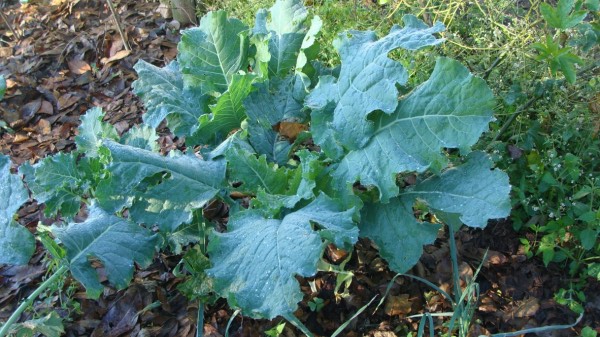
This page was last updated by Bernard Preston on 9th March, 2023.
There is much diversity of kale varieties and researchers have found that there are a multitude of differences in their nutrient-content; what they have in common is about 50 very special phytochemicals called flavonoids.
One in particular called glucoraphanin is highly praised for its ability to prevent malignant-cells from proliferating.
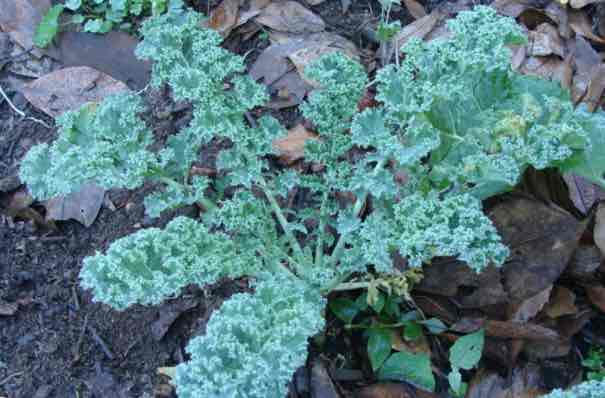
So our recommendation is a blend of these different plants. We have
at least four, with several variants after years of crossing in our
garden; a broad-leafed quite tall one, the curly kale and another known
as the dinosaur. Some keep bearing for many seasons.
Looking at these varieties in the garden, you would think they are quite different vegetables, but they are all kale; good stuff.
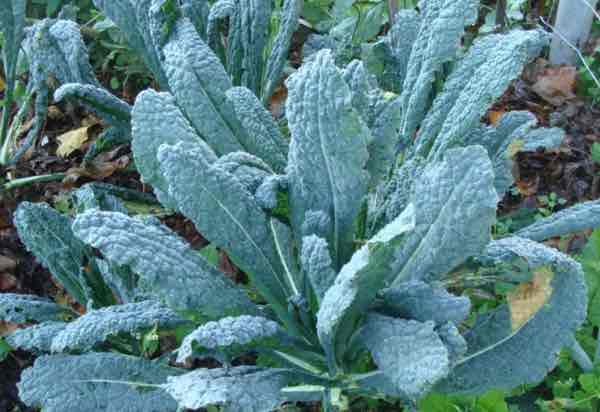
Preventing blindness
So what is kale good for?
Top of the list is a substance called lutein; in fact kale is the richest source of this important carotenoid. Along with another known as zeaxanthin, they are found in very high concentrations in the retina of the eye where they give protection against high-frequency light that damages the rods and cones.
A deficiency of either of these carotenoids is the chief cause of age-onset blindness; a condition called macular degeneration. Actually dopamine comes into the equation too[3].
Five million Americans are needlessly blind because of AMD, and many more are partially-sighted. What is of great concern is that the prevalence is growing rapidly as people eschew their greens; from 2000 to 2010 it grew by 18% and by 2050 is expected to affect 8,000,000 folk.
And that's in just one country where a multitude will needlessly have lost their vision. What is kale good for? It will help stop you going blind when you get old.
Moreover researchers have found that those eating just half a cup of kale per week have a lower chance of getting cataracts too. It is for these reasons that we enjoy it almost every day. I have no desire to have doctors poking sharp-instruments into my eyes.
Lightly steamed is best, but raw kale in a salad is also excellent; provided the leaves are young and freshly-harvested. It has little flavour; we eat it because it is good for us.
The world has conned us into thinking we only need to eat food that appeals to our senses; we have an entirely different view, but with a little imagination you can turn your dark-green leafy vegetables into very tasty dishes.
What is kale good for is a good question because it is nearly tasteless; so why should we eat it? For this reason most folk shun it, but we have found some ways to dicky it up and making it most palatable.
But even so, just because of its lutein content, I would eat it even if tasted horrid; needlessly going blind is not something that appeals to me.
Read more on the subject at lutein macular degeneration.
An anti-tumour food
The second good reason to eat kale, whether you enjoy its lack of taste or not, is its glucoraphanin content; it is complex biochemistry that is only for the boffins, but in case you are interested it is converted to a powerful anti-malignancy compound called sulforaphane. It's particularly good for diabetics too.
It inhibits a nasty antibiotic-resistant bug called Helicobacter pylori that causes stomach ulcers and tumours too[1].
Think too of kefir benefits for an unhappy stomach; it is a natural probiotic that is very easy to keep in your own kitchen. It cured my own Helicobacter infection, and dreadful epigastric pain in a week, but that is only an anecdote. The bug was completely resistant to the prescribed drugs.
Kale lowers cholesterol
The third good reason to eat kale regularly is that research shows that the fibre binds with bile-acids in the colon and thus reduces cholesterol levels in the blood.
That fibre also acts as a prebiotic,
passing undigested through the small intestine, giving it bulk but then
reaching the greedy billions of beneficial bugs in the colon; they in
turn convert it into vital short-chain fatty acids.
Moreover
some compound in the juice of the kale further reduces the low-density
portion whilst raising the friendly HDL. Again it is only anecdotal but
despite a great love of butter, cream and fat in general, my total
cholesterol is only 4.7 (85mg/dl).
It also reduces certain markers associated with cardiovascular-disease.
Smoothies
This nutritious green smoothie is a great way to get dark-green veg like kale into the family.
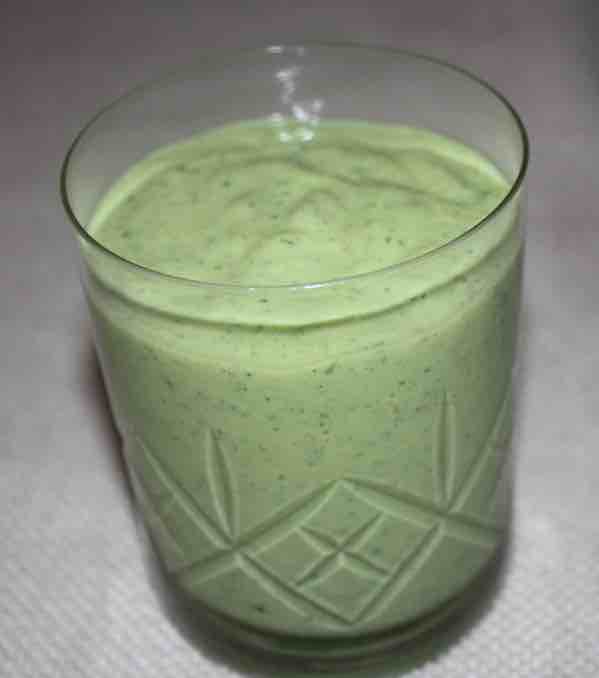
We use smoothies to soften the sourness of our probiotics; do you know how to make kefir? I list it as one of the top five reasons why in our dotage neither of us take any medication whatsoever. Together with a dark-green leafy vegetable like kale and a teaspoon of natural honey it makes for a very fine appetiser at breakfast.
Kale helps keep you regular
The fourth good reason is that kale is high in fibre and is a natural way of preventing constipation, and all the ills associated with that nasty condition.
In short what is kale good for? A heap of things, and I am sure there are many other yet unproven reasons why we should be eating this vegetable several times a week; as I said we eat it daily in our Eggs Hilton, a crib on that great recipe from Florence.
For example it has folate that is so important in preventing inflammation in the body, and birth defects. And it is particularly rich in the vitamins A, C and K; they are in fact found in most dark-green leafy vegetables.
A fifth reason is that in midsummer many other greens like lettuce and spinach are wilting or going mouldy. Kale gives us a fresh vegetable from the garden all year round. Frankly it is pretty ghastly from the greengrocer, if you can get it at all; it so easy to grow, continuing to yield for umpteen seasons.
We call this bush everlasting kale; we reckon this one single plant has supplied us with over two thousand rand's worth of greens, not that they all survive indefinitely.
How to cook kale
How to cook kale is a question we have faced because to be honest it is a rather dull vegetable; we eat it not because it tastes like a treat but because it is so important in preventing disease and promoting our wellbeing; research suggests it is best lightly-steamed.
Fry a little of any one of the onion family is some butter. Toss in a slither of any chili; we like the jalapeno and peppadew, and a clove of chopped-garlic.
Often we would drop in a few green legumes. That might be string-beans, limas or even favas; peas too when they are in season are delicious when fresh from the garden. Finely slice the kale, drop it in the pot, add a couple tablespoons of water and steam it with the lid on for a few minutes; do not let it burn. Half a teaspoon of turmeric adds to the flavour and nutrition.
You could then drop an egg on the greens and turn it into a variation of the great Florentine breakfast, normally reserved for spinach. On a slice of pan-fried toast it is simply lovely.
A kale and spinach sauce will turn any dull green-salad into a delight; blend it up in a jiffy.
Here are a few more thoughts and recipes for cooking kale.
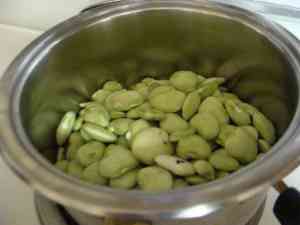
Now add your finely-sliced kale to the lima beans; it is good.
When browsing use right click and Open Link in New Tab, or you may get a bad gateway signal.
Newsletter
Our newsletter is entitled "create a cyan zone" at your home, preserving both yourself and Mother Earth for future generations; and the family too, of course. We promise not to spam you with daily emails promoting various products. You may get an occasional nudge to buy one of my books.
Here are the back issues.
- Lifestyle and ideal body weight
- What are ultra-processed foods?
- Investing in long-term health
- Diseases from plastic exposure
- Intensive lifestyle management for obesity has limited value
- A world largely devoid of Parkinson's Disease
- The impact of friendly bacteria in the tum on the prevention of cancer
- There's a hole in the bucket
- Everyone is talking about weight loss drugs
- Pull the sweet tooth
- If you suffer from heartburn plant a susu
- Refined maize meal and stunting
- Should agriculture and industry get priority for water and electricity?
- Nature is calling
- Mill your own flour
- Bake your own sourdough bread
- Microplastics from our water
- Alternative types of water storage
- Wear your clothes out
- Comfort foods
- Create a bee-friendly environment
- Go to bed slightly hungry
- Keep bees
- Blue zone folk are religious
- Reduce plastic waste
- Family is important
- What can go in compost?
- Grow broad beans for longevity
- Harvest and store sunshine
- Blue zone exercise
- Harvest and store your rainwater
- Create a cyan zone at your home
Did you find this page interesting? How about forwarding it to a friendly book or food junkie? Better still, a social media tick would help.
- Bernard Preston homepage
- Greens
- What Is Kale Good for
Address:
56 Groenekloof Rd,
Hilton, KZN
South Africa
Website:
https://www.bernard-preston.com